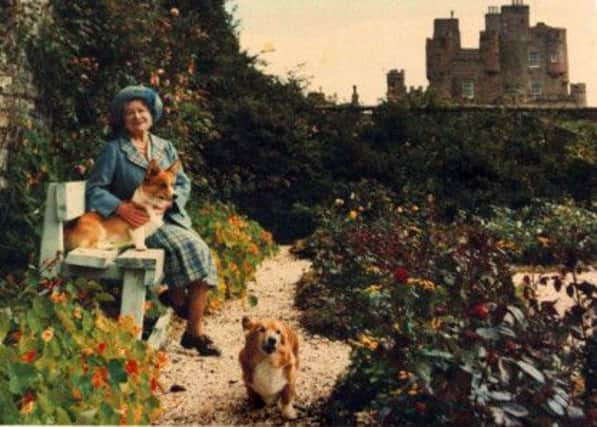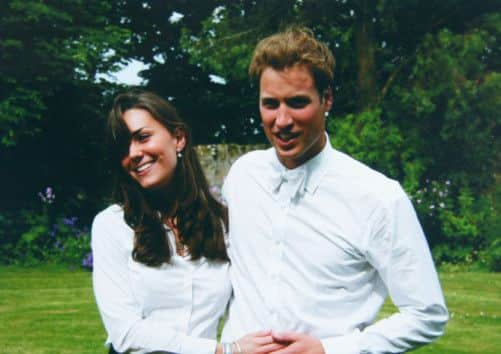Comment: Scottish monarchy depends on people’s will


The new successor to the throne may one day face head on a task that has never deeply troubled any recent occupant of it: how to reforge the relationship between Scotland and its monarch.
The Queen’s official title, set down in the Royal Titles Act 1953, is “Elizabeth II, by the grace of God of the United Kingdom of Great Britain and Northern Ireland and of her other realms and territories”. No reference to Scotland, so no reference either to the fact that she is only Elizabeth I of this country. It seems unlikely the nation of the future will put up with the wrong number, and apart from that, with being unmentionable.
Advertisement
Hide AdAdvertisement
Hide AdYet there is a specific Scottish royal title that vanished only in 1707, a translation of the Latin Rex (or Regina) Scotorum, King or Queen of Scots. By immemorial tradition, it designates a sovereign over a people, not over a territory, and to that extent makes explicit that he or she is responsible to them and not the owner of it. This was indeed Scotland’s own constitutional doctrine, fashioned by George Buchanan in the 16th century, abolished with the rest of its statehood in 1707. Since the modern constitution is likely to be constantly refashioned during the 21st century, it may be time to bring that old title back.


Of course, it might be argued that in real terms a Scottish monarchy ceased to exist on 6 April, 1603, the day King James VI crossed the Border on his way to London to ascend the English throne. This was the Union of Crowns, prelude to the Union of Parliaments a century later.
King James returned to his homeland just once, in 1617, and then he dismayed his faithful Scots with the English ways he had taken on meanwhile. Even those of his descendants who came to Scotland – Kings Charles I and II, then James VII only while still heir presumptive, and after him just the Jacobite pretenders – came as foreigners. They never loved Scotland and Scotland never loved them, which was not the least foundation for the Scots’ eventual acceptance of the Hanoverian succession after 1714.
But no Hanoverian monarch turned up before King George IV. His appearance in 1822 with feathered bonnet cocked as Chief of Chiefs, in Highland dress brilliant with jewelled brooches and burnished weaponry, was delightful to himself and to the organiser of his visit, Sir Walter Scott, as well as to ladies admiring the kingly legs clad in pink tights under a mini-kilt. “Since he is to be among us for so short a time, the more we see of him the better,” said one roguish dame. Yet it was not something that endeared him to Edinburgh or the Lowlands in general, marked as they were, rather, by Presbyterian sobriety. Anyway, he did not come back, and links between Scotland and the monarchy might once again have loosened through sheer neglect. Queen Victoria would change all that.Not that Victoria and her husband, Prince Albert, after they bought Balmoral in 1852, could be said to have put themselves much in touch with the real Scotland either. It was a country full of variety, but one where the generation of new wealth in industrial conurbations forced social revolution along. This did not interest the royal couple. The Balmoral they preferred could offer them, by contrast, an ideal, even an idyll, a simple one innocent in its very isolation from the real Scotland, its way of life resistant to change, its values traditional, its environment unspoiled.
But at least some relationship between the Scottish nation and the Scottish monarchy was re-established. It has since grown closer. The biggest difference was made by Queen Elizabeth the Queen Mother, herself a Scot who brought to an end the long-established custom in the royal house of marriage with minor German princesses. And into the family’s way of life more Scottish substance was permanently built in – especially the summers invariably spent at Balmoral, every long day heralded by a piper over the porridge.
The Queen Mother also extended the royal properties in Scotland with her purchase of the Castle of Mey and the most northerly farm in Great Britain, overlooking the Pentland Firth. In her early widowhood it was her own personal hideaway, a function it fulfils today for the Duke and Duchess of Rothesay.
The Castle of Mey is another place where Prince Charles can pursue his interest in ecological agriculture, and under conditions far more demanding than on his properties in England. This seems to have restored his rapport with the rigours of Scottish outdoor life, something that reputedly suffered from the sensitive boy’s education at Gordonstoun.
There was a far more positive experience of Scottish education for today’s proud parents, the Duke and Duchess of Cambridge, otherwise known as the Earl and Countess of Strathearn. Scotland’s most ancient university at St Andrews was where they met and fell in love.
Advertisement
Hide AdAdvertisement
Hide AdIt is obvious, when they revisit their old haunts, how much they hold it in affection too.
Was it a sign of political astuteness in the House of Windsor to give the second in line to the throne a still-closer connection to Scotland than either his father or grandmother? By the time Prince William grew up the Scots’ relationship to the United Kingdom had grown uncertain, indeed uneasy. With independence on the cards, there was no absolute guarantee a Scottish monarchy would survive. And there have always been plenty of republicans in the SNP. At the start of his career the First Minister, Alex Salmond, was one of them. Luckily he shares with the Queen a burning interest in horseflesh, which seems to have cemented their personal relationship. Both are now happy with the idea that, in an independent Scotland too, she will remain head of state so long as the Scots want her.
Already, as of old, the Scottish monarchy once again depends on the will of the people. The Queen has had to learn this concept but her grandchild and heir will grow up with it: all to the good of both Scotland and the House of Windsor.